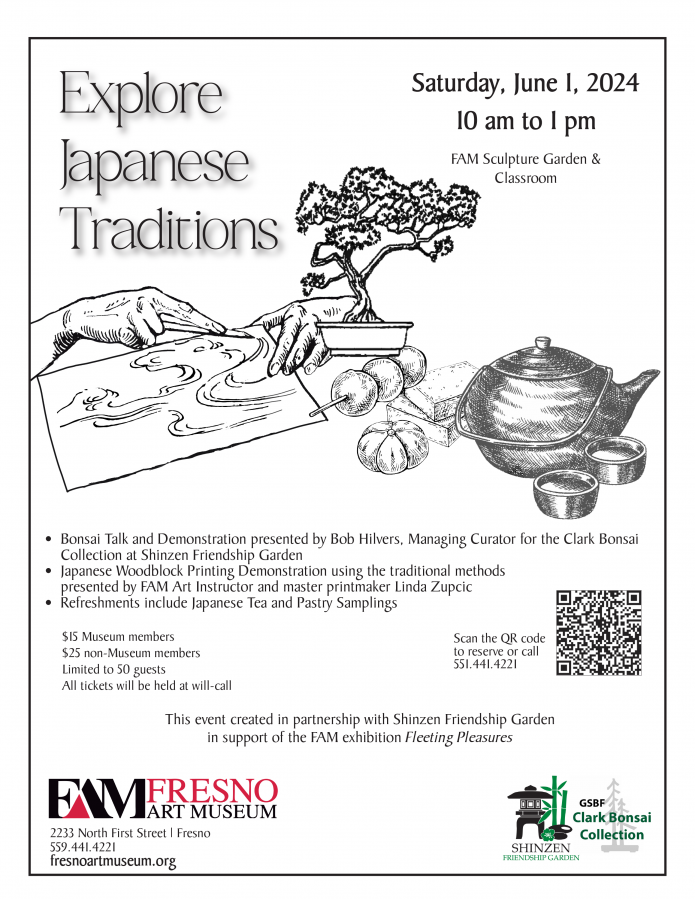
Click here to purchase tickets
More details about the event
Bonsai
This part of the event is a multi-format discussion of the art of bonsai presented by Bob Hilvers, Managing Curator of the Clark Bonsai Collection at the Shinzen Japanese Friendship Garden, will lead us on a virtual journey to explore the origins of Bonsai in ancient China with a stopover in medieval Japan to discuss how the art migrated there and then flourished during the Meiji Restoration (1868-1889). Finally, Bob will bring the discussion back to California to learn what part Japanese Americans played in the history, culture, and aesthetic development of the art.
During his presentation, Bob will demystify the art of Bonsai and in doing so create a new appreciation for the art and those who create it. Bob will show us what makes it a Bonsai, what the term bonsai really means, where Bonsai come from, and what are some of the processes used to create the art.
Bob will also delve into how the science of physics is combined with horticulture and an astonishing mastery of technique to achieve a unique aesthetic that blends art with nature. His goal is to offer us an enjoyable experience and in the process provide us with the ability to understand, appreciate, and interpret the enigmatic yet alluring art of Bonsai.
An abbreviated history of bonsai:
The Japanese art of bonsai actually has roots (no pun intended) in China. Chinese horticulturists created entire miniature landscapes over 2,000 years ago. They believed that the smaller the plants were from their originals they mimicked, the more magical the properties they held.
About 700 years ago, Japanese monks copied the art form from the Chinese but with their own distinctive take on the works they created. Under the influence of Zen Buddhism, they focused on individual trees instead of entire landscapes. Thus the term bonsai or “planted in a container” came to be. They used bamboo, wire, and grafting techniques to create their dwarf trees. Bonsaigradually made its way from monasteries to the royals where they were considered symbols of status and honor. During medieval times (1333-1573), bonsai became more available to all social classes and by the 17th century were commonplace in the homes of all Japanese people. By that time, the trees had evolved into a more minimalist “less is more” look. They continue to evolve in the modern era and can be found and revered around the world.
The techniques for growing and caring for bonsai are complex and take infinite patience and time when starting from a seed, anywhere from 10 to 30 years to reach maturity. When given as a gift, the trees are believed to bring good luck and good fortune. They are a symbol of peace and harmony.
The oldest known bonsai tree is estimated to be over 1,000 years old and can be found in the Crespi Bonsai Museum near Milan, Italy.
Woodblock Printing
Japanese woodblock prints from the Edo Period gained popularity from the 17th to the 19th century and were mass produced and collected by all social classes. The art was referred to as uniyo-e, literally meaning “pictures of the floating world.” There was a separation of labor when creating the woodblock prints—an artist or designer would design the image as a painting, another person would carve the woodblock, and a third person would print the image. At first, only the elite were represented in the artworks, but with the popularity of the artform, artists started including more everyday subjects, from courtesans, geishas, and kabuki actors to romantic landscapes.
A demonstration of traditional Japanese woodblock carving and printing techniques will be presented by FAM art instructor and master printmaker Linda Zupcic.
